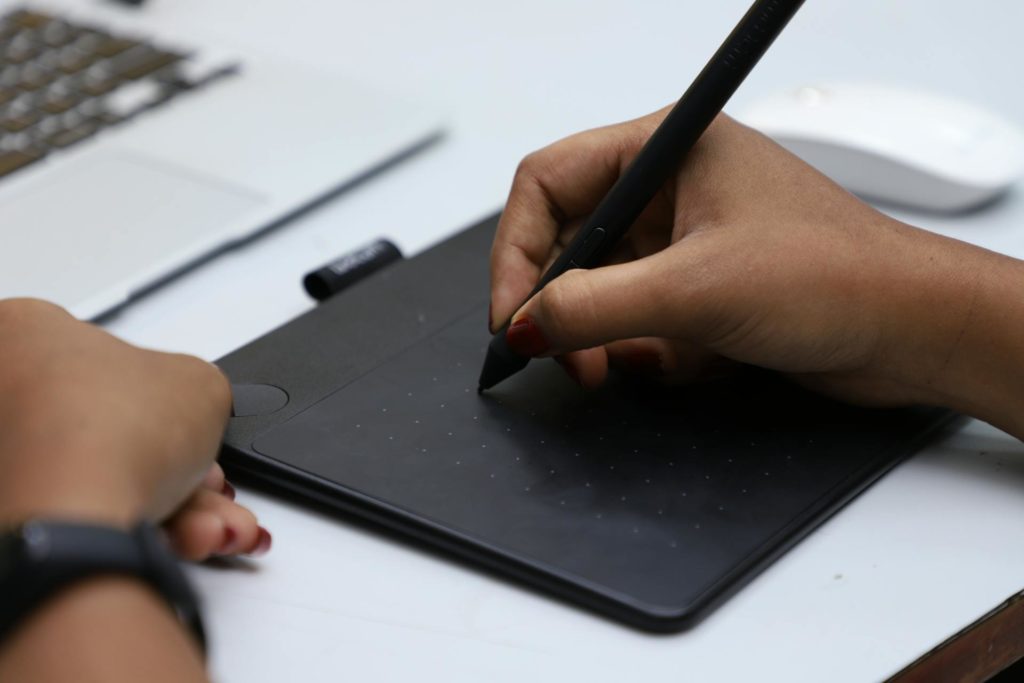
Cryptocurrency, a decentralized digital currency rooted in cryptographic principles, has surged, redefining transactions and ownership paradigms. This surge intersects with the art world, triggering a transformative wave facilitated by cryptocurrency’s advent. At its core is the unveiling of digital art ownership, propelled by blockchain technology. As cryptocurrency and digital art converge, a crucial nexus emerges, reshaping the dynamics of artistic creation and ownership. This symbiotic relationship holds profound significance for artists and enthusiasts, transforming the artistic engagement landscape. Additionally, if you want to know more about investments and firms, you may visit https://quantum-astral.com/.
The Evolution of Digital Art
The Historical Canvas
Tracing the roots of digital art unveils a journey from conventional artistic mediums to the virtual realm. As artists embraced technology, a new canvas emerged, transcending physical constraints.
Digital Metamorphosis
The transition from physical to digital art has been marked by an evolution in creative processes, enabling artists to harness the potential of digital tools. This metamorphosis, while liberating, has also presented unique challenges.
Navigating Challenges
The digital art space, despite its promise, grapples with issues such as copyright infringement and the ephemeral nature of virtual creations. Addressing these challenges is integral to fostering a sustainable digital art ecosystem.
Blockchain Technology and Its Role
Unraveling Blockchain
At the core of the cryptocurrency and digital art nexus lies blockchain technology—a decentralized ledger ensuring transparency, security, and immutability. Its application in the art world is revolutionary.
Safeguarding Authenticity
Blockchain’s role in guaranteeing the authenticity of digital art cannot be overstated. Through cryptographic signatures and smart contracts, it provides a robust framework for establishing provenance.
Balancing Acts
While the benefits of blockchain technology in the digital art realm are evident, challenges persist. Striking a balance between transparency and privacy is a delicate consideration in the adoption of blockchain for art.
Cryptocurrencies as a Medium of Exchange for Digital Art
A Medium Beyond Conventional Transactions
Cryptocurrencies serve as an alternative medium of exchange for digital art, challenging traditional methods. The fluidity of digital assets in this realm reshapes the landscape of artistic transactions.
Case Studies in Digital Art Transactions
Examining instances where digital art has changed hands through cryptocurrency transactions offers insights into the practical application of this novel exchange mechanism.
Facing Criticisms and Challenges
The use of cryptocurrencies in art transactions is not without skepticism. Examining the criticisms surrounding this approach sheds light on potential pitfalls and considerations.
Decentralized Art Ecosystems

A Paradigm Shift in Art Distribution
Decentralized art ecosystems redefine how digital art is created, shared, and appreciated. These decentralized networks empower artists and collectors by eliminating traditional intermediaries.
Advantages of Decentralization
The benefits of decentralized art ecosystems extend to both artists and collectors, fostering a more inclusive and transparent environment. This shift challenges centralized models prevalent in the traditional art world.
Navigating Risks
Despite the promise of decentralization, risks and concerns arise, ranging from technological vulnerabilities to governance challenges. Examining these aspects is crucial for a comprehensive understanding of the decentralized art landscape.
Tokenization of Art Assets
Unveiling the Concept of Tokenization
Tokenization, a key aspect of the cryptocurrency and digital art confluence, involves representing digital art as unique tokens on a blockchain. This process introduces a new layer of ownership and exchange.
The Tokenization Advantage
Tokenizing art assets offers advantages such as fractional ownership and enhanced liquidity. Understanding these benefits contributes to grasping the transformative potential of tokenization.
Emerging Trends in Tokenized Digital Art
As the digital art landscape evolves, emerging trends in the tokenization of art assets point towards new possibilities and applications. Exploring these trends provides a glimpse into the future of digital art ownership.
Legal and Ethical Considerations
Navigating Copyright and Intellectual Property
The digital art realm raises complex legal questions regarding copyright and intellectual property. Understanding these considerations is essential for maintaining a fair and ethical digital art ecosystem.
Regulatory Perspectives
The regulatory landscape surrounding cryptocurrency and digital art continues to evolve. Exploring current regulations and potential future developments sheds light on the legal framework shaping this intersection.
Ethical Dimensions of Ownership
Beyond legal considerations, the ethical implications of digital art ownership, provenance, and distribution merit exploration. Examining these dimensions contributes to the development of responsible practices in the digital art space.
Future Trends and Possibilities
Shaping the Future Landscape
The confluence of cryptocurrency and digital art is a dynamic space with evolving trends. Identifying these trends offers a glimpse into the potential trajectories that may shape the future of digital art ownership.
Impact on Traditional Art Dynamics
As digital art gains prominence, its impact on traditional art dynamics becomes increasingly apparent. Examining this intersection provides insights into the interconnectedness of the digital and physical art worlds.
Speculating on the Path Forward
Anticipating the future trajectory of digital art ownership involves considering technological advancements, cultural shifts, and the evolving preferences of artists and collectors. Speculating on this path forward adds a forward-looking perspective to the discourse.
Conclusion
In conclusion, a recapitulation of the key insights attained from delving into the realm of cryptocurrency and digital art ownership underscores the intricate and transformative nature of this intersection. The journey through the evolution of digital art, the role of blockchain technology, the use of cryptocurrencies in art transactions, the emergence of decentralized art ecosystems, the tokenization of art assets, and the consideration of legal and ethical dimensions has unveiled a nuanced landscape. As we conclude, pondering the future becomes imperative, contemplating the ongoing evolution and envisioning the potential for further breakthroughs in the integration of digital art with cryptocurrency. This reflective stance invites a forward-looking perspective on the dynamic trajectory of digital art ownership, hinting at the continued interplay between technological advancements, cultural shifts, and the evolving preferences of artists and collectors.

